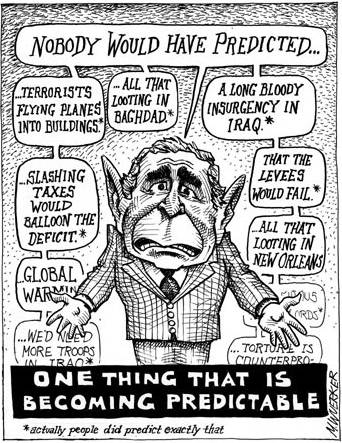Why the NSA's snooping is unprecedented in scale and scope.
By Shane Harris and Tim Naftali
Posted Tuesday, Jan. 3, 2006, at 6:30 AM ET
Fifty years ago, officers from the Signal Security Agency, the predecessor to the National Security Agency, visited an executive from International Telephone and Telegraph and asked for copies of all foreign government cables carried by the company. The request was a direct violation of a 1934 law that banned the interception of domestic communications, but Attorney General Tom Clark backed it. Initially reluctant, ITT relented when told that its competitor, Western Union, had already agreed to supply this information. As James Bamford relates in his book The Puzzle Palace, the government told ITT it "would not desire to be the only non-cooperative company on the project." Codenamed Shamrock, the effort to collect cables sent through U.S.-controlled telegraph lines ultimately involved all the American telecom giants of the era, captured private as well as government cables, and lasted nearly 30 years. Like other illegal Cold War domestic snooping programs —such as the FBI's wiretaps without warrants and the CIA's mail-opening operations—it collapsed under the weight of public reaction to the abuses of executive power revealed by Vietnam and Watergate.
Con't
Thursday, October 11, 2007
Subscribe to:
Post Comments (Atom)

 .
.








 May love and laughter light your days,
and warm your heart and home.
May good and faithful friends be yours,
wherever you may roam.
May peace and plenty bless your world
with joy that long endures.
May all life's passing seasons
bring the best to you and yours !
*******
Thanks Pbtrue1. :)
May love and laughter light your days,
and warm your heart and home.
May good and faithful friends be yours,
wherever you may roam.
May peace and plenty bless your world
with joy that long endures.
May all life's passing seasons
bring the best to you and yours !
*******
Thanks Pbtrue1. :)

















































 .
"Hello to our friends and fans in domestic surveillance."
.
"Hello to our friends and fans in domestic surveillance."































 *Hee Hee*
Submitted by Alice on Sun, 08/05/2007 - 4:02am.
MM.. :)
*Hee Hee*
Submitted by Alice on Sun, 08/05/2007 - 4:02am.
MM.. :)
 I'm Eighteen (Album Version)
I'm Eighteen (Album Version)
No comments:
Post a Comment